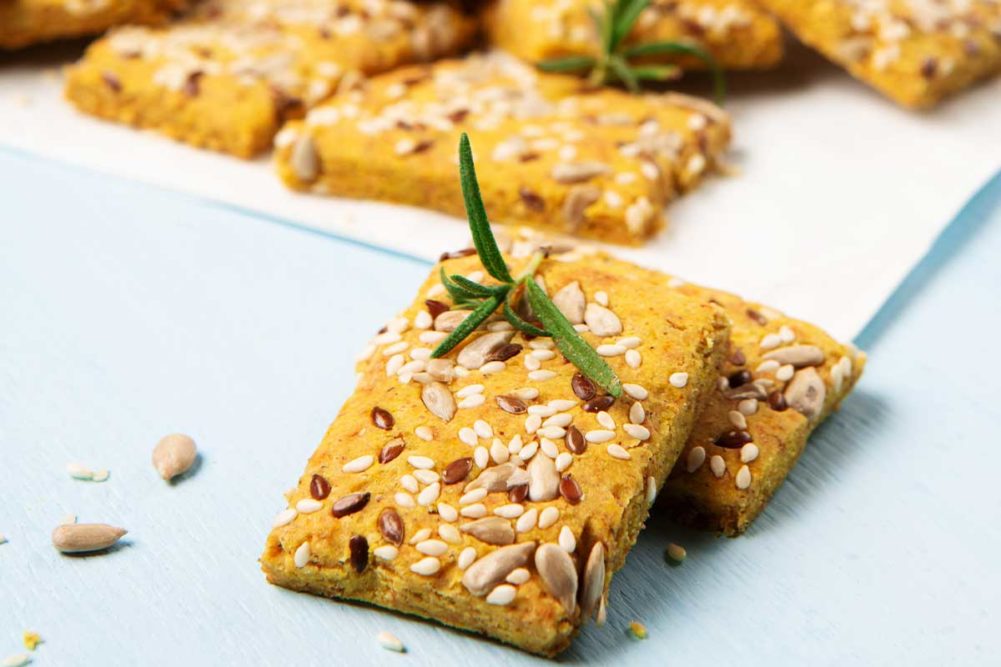Food texture is not something most consumers think about unless it’s off, like when a cracker isn’t crisp or a loaf of bread is too dense. When it comes to baked foods, deviations from traditional recipes, such as the absence of gluten in sandwich bread can ruin the texture.
When it comes to going gluten-free, Daniel Marciani, bakery research manager, Glanbia Nutritionals, suggested that bakers “set aside the familiar toolbox of ingredients and pull a new one out of the shed.”
When CuliNEX, a food product development consultancy, is helping a client company improve the texture of a gluten-free baked food, its go-to tools include eggs. But if a vegan claim is being made, this is not an option.
“Eggs and egg whites provide significant functionality in gluten-free baking,” said Kristen Sparkman, culinologist, CuliNEX. “They provide structure to help with a light and airy texture. They help to retain moisture and provide binding.”
Before attempting to improve texture, bakers have to be clear about any label claims they are trying to achieve, such as vegan or allergen-free, as those claims will eliminate some conventional formulating tools. The former rules out use of dairy and eggs, and the latter excludes soy and nut flours. Distribution demands and shelf life requirements must also be considered.
Ms. Sparkman suggested that the mix and bake processes be carefully examined. Try adding water during different mix stages, as well as separately hydrating the functional ingredients before adding them to the batter or dough.
“Working with adjustments in each process step in scale-up can help optimize functional ingredients,” Ms. Sparkman said. “Our best efforts to replicate baked goods on the bench always come down to understanding the equipment and working nimbly in scale-up.”
Formulating gluten-free baked foods requires several solutions, especially when troubleshooting to improve a characteristic like texture.
“Replacing gluten is rarely a one-ingredient answer; rather it is a combination of ingredients complementing each other to provide the necessary solution,” said Aaron Reed, senior food technologist, Cargill.
Suppliers will often work with bakers to develop a gluten-free mix that works for their process and product targets. Glanbia, for example, offers gluten-free mixes for bread, tortillas and a specialty mix for cookies, cakes and quick breads, which serve as starting points for customization. The company also offers an enzyme-driven solution to slow starch retrogradation to keep products softer longer.
Corbion offers enzyme-based extended shelf life and dough strengthening solutions to modify specialty ingredients in gluten-free mixes. This improves extensibility and gas retention capabilities.
“We use advanced enzyme technologies with a clear understanding on why and how those enzymes interact with other components in the dough system,” said Yanling Yin, PhD, director of research, development and application, bakery, Corbion. “We also offer gluten-free bread and tortilla bases. With these solutions, bakers only need to add water and some yeast. There’s no need to batch in additional functional ingredients. This enables bakers to improve bakery production efficiency by reducing batching errors.”
Starches, gums and other hydrocolloids are essential to achieve optimal functionality in gluten-free baked foods. Plant-based proteins are also common ingredients.
“High-quality tapioca starches provide a neutral foundation that supports great taste, optimal texture and superior functionality,” said Paula LaBine, marketing director, milling and baking solutions, ADM. “Soy and pea protein powders, along with flax and chia powders, provide functional attributes to aid in binding and emulsification in snack and bakery formulations.”
Beneo’s range of specialty rice ingredients are used across the industry to create many gluten-free baked foods. A combination of rice starches from different rice types helps to form the base of many products.
“Native rice starch made from indica rice can help improve crumb structure in a baked good by aiding in the formation of air bubbles during baking thanks to its amylose content and stiffer gel properties,” said Steven Gumeny, product manager, rice ingredients and functional proteins, Beneo North America. “There are also micronized, wet-milled flours available from this rice type that provide improved dough spring in either breads or cakes and are labeled simply as ‘rice flour’ on pack.”
This article is an excerpt from the December 2022 issue of Baking & Snack. To read the entire feature on Texture, click here.






